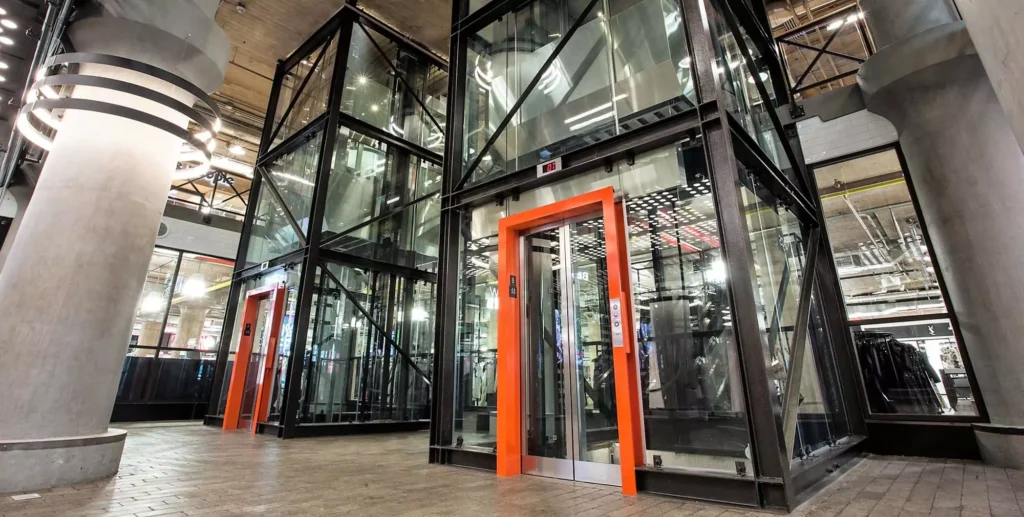Hydraulic lifts are ideal solutions for lifting cabins in low and medium-rise buildings. This type of elevator adopts hydraulic pressure to lift and lower the cab smoothly and safely. The hydraulic elevator has the advantage of being able to lift heavy weights compared to traditional electric elevators, and mainly relies on a pump that pushes oil into a cylinder to lift the elevator. In this article, we will review in detail how the hydraulic lift works, its main components, advantages and disadvantages, and important tips on maintenance.
How the hydraulic lift works
Basic Working Principle
The hydraulic lift works by pumping oil through a pump into a large cylinder containing a piston. The piston is pushed upwards as a result of oil pressure, lifting the cab. When the lift needs to be lowered, the oil is released controllably to gently return the piston down.
The main components of the hydraulic elevator
- Hydraulic pump: She pumps oil into the cylinder.
- The cylinder: They contain oil and drive the piston to lift the cab.
- Hydraulic valve: It controls the oil flow and helps to adjust the speed of the lift.
- The reservoir: It stores the oil used in the process.
- Piston : The part that rises and falls to move the cab.
Features of the hydraulic elevator
1. High ability to lift weights
Thanks to the power of the hydraulic system, hydraulic lifts can lift heavy weights easily.
2. Lower installation cost
The installation of hydraulic elevators requires a lower cost compared to electric elevators, since you do not need a large machine room at the top of the building.
3. High security
The hydraulic lift is safer in emergency situations such as power outages, as the cab can be easily lowered by releasing the hydraulic pressure.
Disadvantages of the hydraulic lift
1. Limited speed
Hydraulic elevators are usually slower than electric ones, which makes them unsuitable for high-rise buildings.
2. Greater power consumption
The hydraulic pump consumes more energy to lift the cab, especially at heavy weights.
3. The need for regular maintenance
Regular maintenance of the hydraulic pump and hydraulic system is necessary to ensure that the elevator works efficiently and to avoid leaks.
Hydraulic elevator maintenance
1. Pump inspection
The hydraulic pump should be checked regularly to ensure the safety of operation and prevent any leaks in the system.
2. Oil replacement
Periodically changing the oil is necessary to maintain system pressure and ensure smooth movement.
3. Check the valves
Hydraulic valves are necessary to control the movement and speed of the elevator, so they should be checked regularly to ensure optimal performance.
Frequently asked questions
1. What is the typical speed of hydraulic elevators
The speed of a hydraulic elevator is usually relatively slow compared to electric elevators, and this speed is commensurate with buildings of medium Heights.
2. Do hydraulic elevators need an engine room
No, hydraulic lifts do not require an upper engine room, which makes them suitable for buildings with limited space.
3. How often should the hydraulic lift be serviced
Regular maintenance should be carried out every 6 to 12 months depending on the use of the elevator to ensure optimal performance and safety.
4. Can hydraulic elevators be used in high-rise buildings
Hydraulic elevators are less effective in high-rise buildings due to their limited speed.
Conclusion
Hydraulic lifts are an ideal option for buildings of medium height that require a high ability to lift heavy weights at a relatively low cost. However, these elevators need regular maintenance to ensure that they continue to operate safely and efficiently. Whether you are considering installing a hydraulic elevator or need to know how to maintain it, understanding its components and mechanism of action will help you get the most out of this type of elevator.



